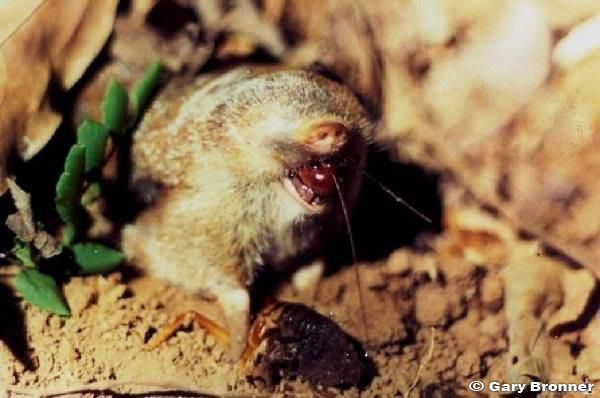Gunning’s golden mole (Neamblysomus gunning) is the highest ranking EDGE species of the enigmatic golden moles, an ancient group of subterranean mammals. The golden moles are aptly named for their fur, which despite varying in colour from yellow to black, usually has an iridescent sheen of coppery gold, purple, green or bronze.

Despite resembling true moles in appearance, golden moles are in fact more closely related to an ancient group of African mammals which includes the elephants, sea cows, hyraxes, aardvark, sengis and tenrecs. Unlike true moles, golden moles do not push soil up into mounds, but rather create conspicuous ridges of soil above their tunnel systems. They create two types of burrow system: tunnels close to the surface that are used for foraging and deeper tunnels that are used for resting and raising their young. They are thought to be most active at night, coming to the surface after heavy rains to feast on earthworms and insects.
This species is endemic to South Africa and only occurs in a few locations over a small area in Limpopo province. Because it is so localized, this animal is particularly vulnerable to human activities. Sadly privatization and development of its habitat are a very real threat to this endangered species.
Would you like to help save this and other EDGE species? See how you could fundraise for EDGE here